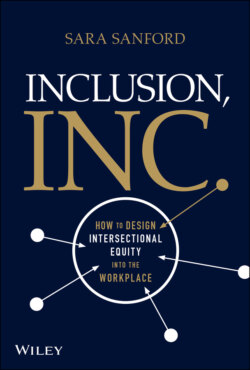Читать книгу Inclusion, Inc. - Sara Sanford - Страница 21
CHAPTER 2 “But We've Always Done It This Way…”
ОглавлениеI am biased against women in leadership.
Specifically, I associate men with leadership and career, and women with family.
At least, that's what the Harvard Implicit Association Test told me.1 And, as the creators of the test recommend in their book, The Blind Spot, I took the test more than once. All six times that I took an iteration of the test, the result was the same: I harbor a strong unconscious bias against women in leadership roles.
If you asked me if I believe women belong in leadership roles, I would confidently answer yes. But, if forced to quickly pair masculine- and feminine-associated terms (man, woman, Mr., Ms.) with domains such as leadership, career, or family, my unconscious is firmly stuck in a biased rut.
Discovering this bias after taking the first test didn't make me any better at suppressing it in the retakes. My unconscious biases overrode my willpower, every single time.
Seated in our amygdala, our unconscious mind drives up to 95 percent of our decision-making.2 If you've ever attended a training on unconscious bias, you've probably heard how our biases are interwoven with an unconscious recognition of patterns, a scheme whose purpose is to keep us safe from potential threats. This combination of sensory perception and unconscious interpretation signals to us how we should respond to our surroundings, including who we should regard as friend or foe.
This unconscious self-defense system keeps ticking away when we go to work, influencing who we associate with, who we think of as capable, and who we do—or don't—value.
Understanding how ever-present and influential our biases are is key to understanding why current approaches to DEI aren't working.
